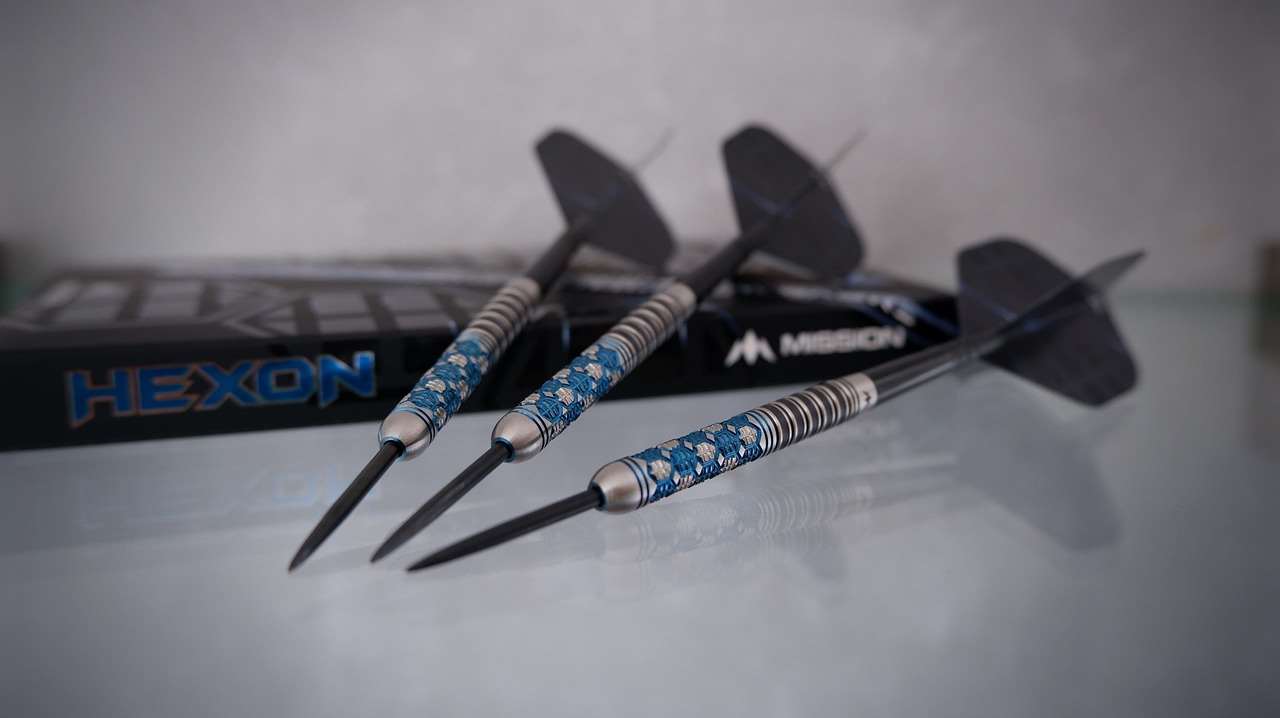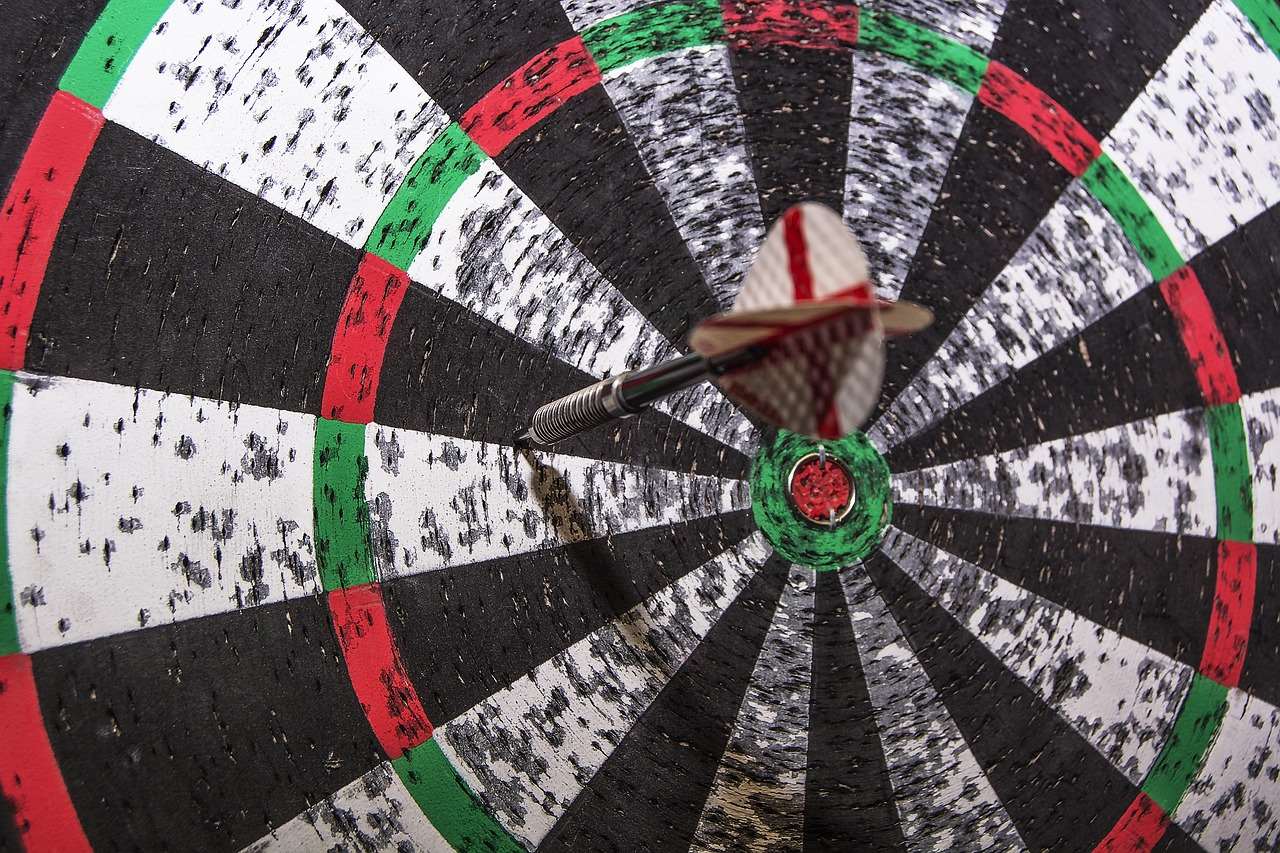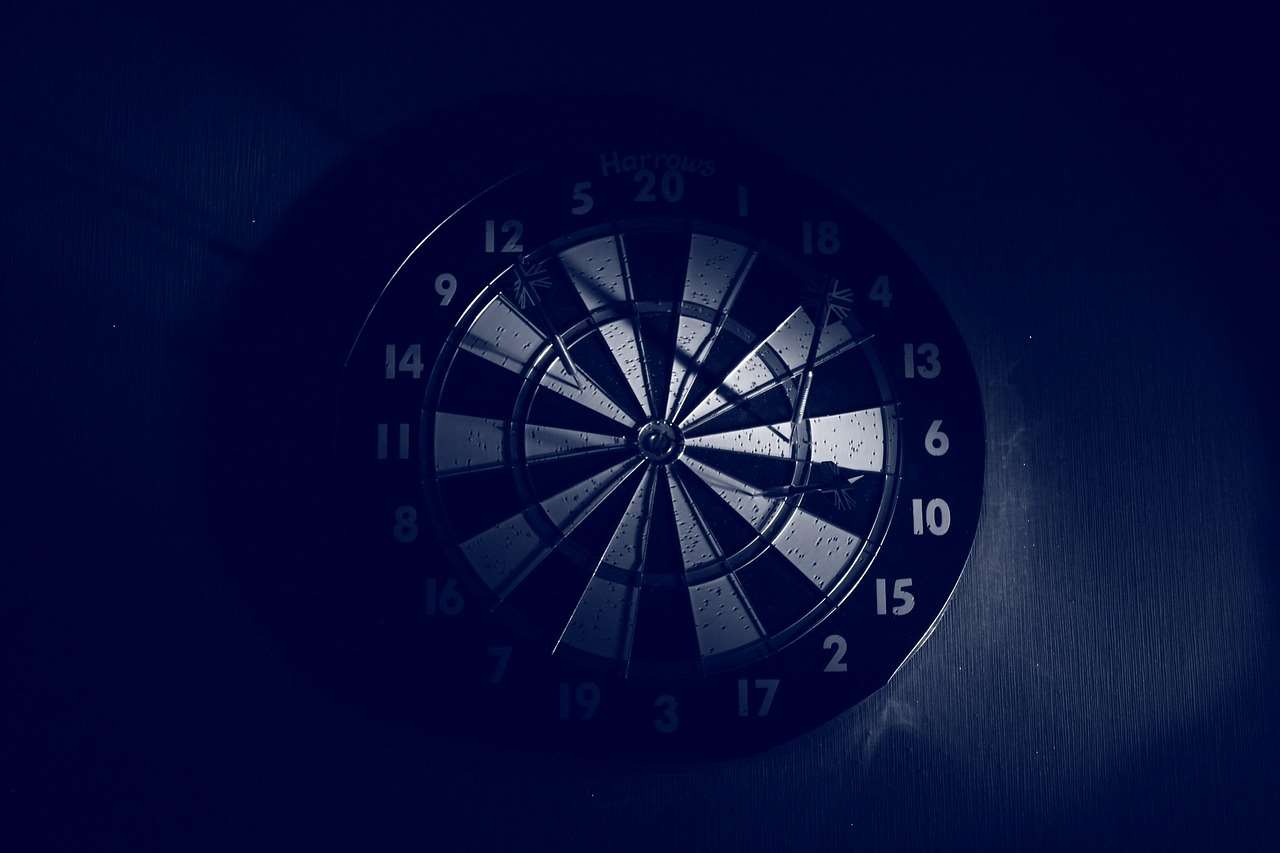Achieving optimal **portable dartboard stand dimensions and stability** is crucial for a consistent and enjoyable darting experience, especially when space is limited or portability is key. This article breaks down the ideal dimensions for a stable stand, factors influencing its sturdiness, and offers practical advice for selecting the right setup to elevate your game. You’ll learn about crucial measurements, material choices, and design considerations that contribute to a wobble-free and regulation-compliant dartboard setup.
⚠️ Still Using Pen & Paper (Of een schoolbord)?! ⚠️
Stap in de toekomst! De Dart Teller -app behandelt alle scoren, stelt kassa voor, en volgt uw statistieken automatisch. It's easier than you think!
Probeer de Smart Dart Teller -app gratis!Klaar voor een upgrade? Klik hierboven!
Understanding Portable Dartboard Stand Dimensions and Stability
The quest for a perfect game of darts often begins with more than just skill; it necessitates a solid and reliable setup. The **portable dartboard stand** offers a convenient solution, allowing you to play virtually anywhere. Echter, the **dimensions and stability** of these stands are paramount to a good experience. A shaky stand can ruin your throw, and inaccurate measurements can put you outside of regulation play. Let’s dive into what makes a good portable stand.
The Importance of Regulation Height
Before delving into the specifics of stand design, it’s crucial to understand the regulation height for a dartboard. According to the British Darts Organisation (BDO) and the Professional Darts Corporation (PDC), the center of the bullseye should be exactly 5 feet 8 inches (1.73 meters) from the floor. A **portable dartboard stand** must facilitate this height, en idealiter, it should be adjustable to accommodate slightly uneven surfaces. Failing to meet this standard will affect your throwing posture and muscle memory. This is particularly important when learning Basic Darts Fundamentals for Beginners, as inconsistencies can hinder progress.
Toe Line Distance and its Relation to Stability
The distance from the front of the dartboard (or rather, a plumb line dropped from the front of the dartboard) to the oche (toe line) is also precisely defined. This distance should be 7 feet 9 1/4 inches (2.37 meters). While this measurement is independent of the stand itself, it’s vital to consider the overall footprint of the **portable dartboard stand** in relation to this throwing distance, especially in smaller spaces. A stand with a wide base can prevent accidental tipping when players lean forward to throw. Ensuring these **regulation standards** are met is a key consideration for serious players. 
Key Dimensions for a Stable Portable Dartboard Stand
Beyond meeting regulation height, the actual **portable dartboard stand dimensions** play a significant role in its stability. Here are some key aspects to consider:
- Base Width and Depth: A wider and deeper base provides a lower center of gravity, making the stand less likely to topple over. Look for stands with a base at least 30 inches wide and deep for optimal stability.
- Leg Material and Thickness: The legs are the foundation of the stand. Sturdy materials like steel or reinforced aluminum are preferable. Thicker legs naturally offer more resistance to bending and swaying.
- Height Adjustability Mechanism: If the stand is height-adjustable, ensure the mechanism is robust and locks securely in place. A flimsy mechanism can introduce wobble and instability.
- Foot Design: Some stands feature adjustable feet, allowing you to level the stand on uneven surfaces. This is a valuable feature for maximizing stability on different terrains.
Material Matters: Choosing the Right Materials for Your Stand
The materials used in the construction of a **portable dartboard stand** significantly impact its durability and stability. Here are some common materials and their characteristics:
- Steel: Steel stands are generally the most robust and stable, but they can also be the heaviest. They are ideal for players who prioritize stability over portability.
- Aluminum: Aluminum stands offer a good balance of strength and weight. They are a good option for players who need a stand that is relatively easy to transport.
- Plastic: Plastic stands are the lightest and most affordable, but they are also the least stable. They may be suitable for casual players or those on a tight budget, but they are not recommended for serious players.
Factors Affecting Dartboard Stand Stability
Beyond the basic **portable dartboard stand dimensions**, several factors can influence the overall stability of your setup:
Weight Distribution
The distribution of weight is crucial. A stand with a low center of gravity is inherently more stable. Consider stands where the weight is concentrated at the base. This helps prevent tipping, especially when the dartboard is hit with force. It’s important to ensure that the weight is evenly distributed across the base as well, to avoid imbalances.
Surface Conditions
The surface on which the stand is placed also plays a vital role. Uneven surfaces can significantly compromise stability. Adjustable feet are essential for compensating for these variations. If playing outdoors, consider using a ground sheet to provide a more stable and even surface. Avoid placing the stand on soft or yielding surfaces like thick carpets or grass without adequate support.
Dartboard Weight
The weight of the dartboard itself can also affect the stability of the stand. Heavier dartboards can put more stress on the stand, especially if it is not designed to handle the weight. Make sure that the **portable dartboard stand** you choose is rated for the weight of your dartboard.
Wind Resistance (Outdoor Use)
If you plan to use the stand outdoors, wind resistance is a significant factor. A wide, lightweight stand can easily be blown over by even a moderate breeze. Consider using weights or sandbags to anchor the stand and increase its stability. Alternatively, look for stands specifically designed for outdoor use that feature wind-resistant designs.
Dartboard Mounting System
The way the dartboard is mounted to the stand also plays a role. A secure and well-designed mounting system will minimize wobble and vibration. Look for stands with robust mounting brackets that firmly hold the dartboard in place. Ensure the mounting system is compatible with your dartboard. Proper mounting prevents accidental detachment, maintaining consistent play. 
Tips for Enhancing Dartboard Stand Stability
Even with a well-designed stand, there are steps you can take to further enhance its stability:
- Use a Dartboard Surround: A dartboard surround not only protects your walls but can also add some weight and stability to the overall setup.
- Add Weights to the Base: Placing weights, such as sandbags or weight plates, on the base of the stand will lower the center of gravity and make it more difficult to tip over.
- Secure the Stand to the Wall: If possible, consider securing the stand to the wall using brackets or straps. This will provide the ultimate in stability, especially in high-traffic areas.
- Regularly Check and Tighten Connections: Na verloop van tijd, the connections on the stand may loosen. Regularly check and tighten all bolts and screws to maintain stability.
Leveling Your Stand: Achieving a Perfect Setup
Leveling your **portable dartboard stand** is a critical step in achieving a perfect setup. An unlevel stand can cause your darts to drift, leading to inaccurate throws and frustration. Use a spirit level to check the level of the dartboard and the stand itself. Adjust the feet of the stand until both are perfectly level. Pay close attention to both horizontal axes to eliminate any tilt. Recheck the level periodically, especially if the stand is moved. This ensures consistent and fair gameplay.
Choosing the Right Portable Dartboard Stand
With a wide variety of **portable dartboard stands** available, selecting the right one can be daunting. Here’s what to look for:
Assess Your Needs
Consider how you plan to use the stand. Will it be primarily for home use, or will you be transporting it frequently? What is your budget? What is the available space?
Read Reviews
Before making a purchase, read online reviews from other users. This can provide valuable insights into the stand’s stability, durability, and ease of use.
Check the Weight Capacity
Ensure that the stand is rated to support the weight of your dartboard. Overloading the stand can compromise its stability and potentially damage the dartboard.
Consider the Portability Features
If portability is a priority, look for stands that are lightweight and easy to fold or disassemble. Wheels can also be a helpful feature for transporting the stand. Echter, remember that prioritizing portability may come at the expense of ultimate stability. Balance your needs and preferences carefully.
Look for Adjustable Features
Adjustable height, leveling feet, and other adjustable features can greatly enhance the versatility and stability of the stand. Look for stands that offer a wide range of adjustments to accommodate different playing conditions.
Invest in Quality
While it may be tempting to opt for a cheaper stand, investing in a quality stand is often worth it in the long run. A well-built stand will provide better stability, durability, and overall performance. This translates to a more enjoyable and consistent darting experience. 
Maintaining Your Portable Dartboard Stand
Proper maintenance is essential for prolonging the lifespan and maintaining the stability of your **portable dartboard stand**. Hier zijn enkele tips:
- Regelmatig schoonmaken: Wipe down the stand regularly to remove dust, dirt, and debris. Use a mild detergent if necessary.
- Lubricate Moving Parts: Lubricate any moving parts, such as hinges and adjustment mechanisms, to keep them functioning smoothly.
- Inspect for Damage: Regularly inspect the stand for any signs of damage, such as cracks, bends, or loose connections. Address any issues promptly.
- Opslaan goed: When not in use, store the stand in a dry and protected location. Avoid exposing it to extreme temperatures or humidity.
Choosing the Right Accessories
Selecting the right accessories can complement your **portable dartboard stand** and enhance your overall darting experience. A well-lit dartboard is crucial for accuracy. Consider adding a dartboard light that attaches directly to the stand. This provides consistent and shadow-free illumination. A dartboard surround is also a valuable accessory, protecting your walls from stray darts and adding a touch of professionalism to your setup. Verder, a good quality dart mat can provide a comfortable and safe throwing surface.
Creative Solutions for Limited Spaces
If space is a constraint, there are creative solutions for setting up your **portable dartboard stand**. Consider using a folding stand that can be easily stored away when not in use. Alternatively, you could opt for a stand with a smaller footprint, but be sure to prioritize stability. Wall-mounted dartboard cabinets are another space-saving option, but they are not portable. Adapting darts rules for small spaces can make your game even more enjoyable.
Troubleshooting Common Stability Issues
Despite your best efforts, you may still encounter stability issues with your **portable dartboard stand**. Here are some common problems and their solutions:
- Wobbling: Check the level of the stand and adjust the feet as needed. Tighten all connections and ensure that the dartboard is securely mounted.
- Tipping: Add weight to the base of the stand. Consider securing the stand to the wall or floor.
- Creaking: Lubricate any moving parts that are causing the creaking. Check for loose connections and tighten them.
The Future of Portable Dartboard Stands
The design and technology behind **portable dartboard stands** are constantly evolving. Expect to see even more innovative designs in the future, with features such as built-in scoring systems, integrated lighting, and enhanced stability mechanisms. As the popularity of darts continues to grow, the demand for high-quality, portable, and stable dartboard stands will only increase. 
Real-World Examples of Stable Portable Dartboard Setups
To inspire you, let’s look at some real-world examples of stable portable dartboard setups:
- The Home Gamer: A player sets up a steel stand in their garage, using sandbags to add extra weight to the base. They have attached a dartboard surround and a dartboard light.
- The Traveling Professional: A professional darts player uses a lightweight aluminum stand with adjustable feet, allowing them to set up a practice area in their hotel room.
- The Outdoor Enthusiast: A player sets up a stand designed for outdoor use in their backyard, using ground stakes to secure it to the ground.
These examples highlight the versatility of **portable dartboard stands** and how they can be adapted to suit different needs and environments.
Regulation Compliance: Essential for Serious Players
For those serious about darts, ensuring compliance with official regulations is paramount. Always verify that your **portable dartboard stand** allows for accurate placement of the bullseye at 5 feet 8 inches from the floor and that the oche distance is precisely 7 feet 9 1/4 inches. Utilizing a measuring tape and spirit level will guarantee you are playing according to the official rules, whether you are practicing alone or competing in a league. Begrip Adapting darts rules for beginners might be helpful, but always strive for official compliance in serious play.
Beyond Dimensions: The Subjective Feel of a Stable Stand
While precise **portable dartboard stand dimensions** contribute significantly to stability, the subjective “feel” of a solid setup is equally important. This encompasses the responsiveness of the stand upon impact of the dart, the minimization of vibrations, and the overall confidence it inspires in the player. A stand that feels solid and reliable translates to a more focused and confident throw. It’s this combination of objective measurements and subjective feel that ultimately determines the quality of a **portable dartboard stand**.
Portable Dartboard Stands: Maximizing Your Game with Correct Dimensions and Assured Stability
Finding the right balance between **portable dartboard stand dimensions and stability** is key to unlocking a great darting experience. By understanding the factors discussed in this guide, you can make an informed decision and select a stand that meets your specific needs and preferences. Remember to prioritize stability, regulation compliance, and proper maintenance for years of enjoyable gameplay. Look for stands with strong materials and a wide base. Be sure to level the stand and securely mount the dartboard for optimal performance. And don’t forget to try some Fun dart game variations to keep things interesting. 
Uiteindelijk, investing in a well-designed **portable dartboard stand** with the right **dimensions and stability** will enhance your game, allowing you to focus on your technique and enjoy the sport of darts to the fullest.
Hoi, Ik ben Dieter, En ik heb Dartcounter gemaakt (Dartcounterapp.com). Mijn motivatie was geen darts -expert - helemaal tegenovergestelde! Toen ik voor het eerst begon te spelen, Ik hield van het spel, maar vond het moeilijk en afleidend om nauwkeurige scores te houden en statistieken te volgen.
Ik dacht dat ik niet de enige kon zijn die hiermee worstelde. Dus, Ik besloot om een oplossing te bouwen: een eenvoudig te gebruiken applicatie die iedereen, Ongeacht hun ervaringsniveau, zou kunnen gebruiken om moeiteloos te scoren.
Mijn doel voor Dartcounter was eenvoudig: Laat de app de nummers afhandelen - het scoren, de gemiddelden, de statistieken, Zelfs checkout suggesties - zodat spelers puur kunnen richten op hun worp en genieten van het spel. Het begon als een manier om het probleem van mijn eigen beginners op te lossen, En ik ben heel blij dat het is uitgegroeid tot een nuttig hulpmiddel voor de bredere darts -community.